
You've heard it before: trout spend most of their time feeding below the surface. But how do you catch what you can't see? Seeing a trout eat a dry fly might be what we all dream about and what originally brought us to love fly fishing, but mastering your ability to fish a fly where you cannot see it requires a unique set of skills. Because a trout's diet consists primarily of subsurface insects, understanding how to effectively fish flies that are submerged is a vital component of bringing more fish to hand and improving your fly fishing skills. Here are six tips to help you unlock the mystery of catching all those fish you cannot see.

Understand the basic lifecycles of aquatic insects
Are trout feeding on larvae, pupae, nymphs, emergers, or something else? If trout are feeding subsurface they could be feeding on any of these stages at any given time. Most trout streams have populations of caddis, mayflies, and midges and subsurface feeding trout could be feeding on any one of these. Caddis and midges have larval and pupal stages while mayflies have nymphal stages. Generally speaking, larvae and pupa are not as active as nymphs. Nymphs often crawl or cling to submerged structure while larvae build a protective casing with tiny rocks and sand. When water temperatures are in a certain range, caddis and midge larvae metamorph into pupa, then in anywhere from a week to a few weeks these pupa can leave the protective casing and swim to the surface to hatch into adults. The emerging stage between pupa and flying adult is when they are most available to be eaten by a hungry trout. Mayflies spend most of their lives as nymphs, crawling and clinging to submerged structure. Similar to caddis and midges, mayflies also emerge into adults when water temperatures are in a certain range. Many mayfly species emerge at the water's surface, changing from a nymph to an adult in the surface film. During this prolonged emergence of a few seconds to a few minutes, they are easy pickings for nearby trout. Whether with, or without, a Montana fly fishing guide, knowing the lifecyles of insects will help you catch more fish.
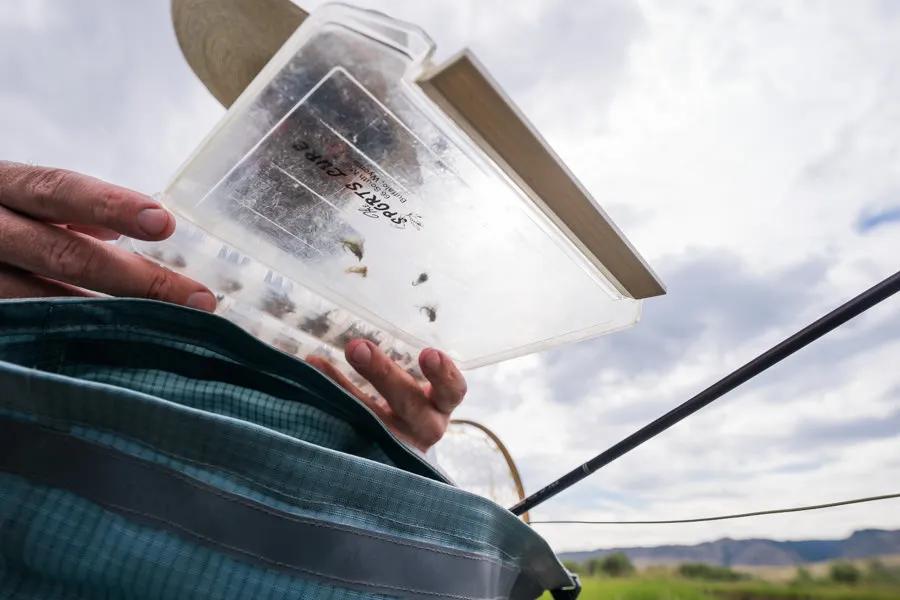
Keep your fly selection simple
Hundreds of fly patterns are available to use when fly fishing with nymphs. But, just as the lifecycles of caddis, midges, and mayflies are similar, so are the qualities that make up effective nymph patterns. The key component to consider is how heavy the fly should be, but more often than not, you want your nymphs to sink as quickly as possible. Unless you are fishing emerging mayflies in the surface film, you should always reach for nymphs tied with beadheads. Depending on the speed of the water consider using a tungsten beadhead fly—faster water requires a heavier bead or the necessity to add weight to your leader. Knowing the importance of beadheads, you can now whittle down your fly selection to include the following: beadhead Pheasant Tail nymphs for mayflies; beadhead Prince nymphs for caddis and stoneflies; Pat’s Rubberlegs for larger stoneflies; Zebra midges for midges, small mayflies, or caddis; and Czech nymphs for scuds and sowbugs; and of course, it is never a bad idea to have at least a San Juan worm or two in your box just in case you end up of fishing water on a Montana river that is off-color or dirty with runoff or a rain event.
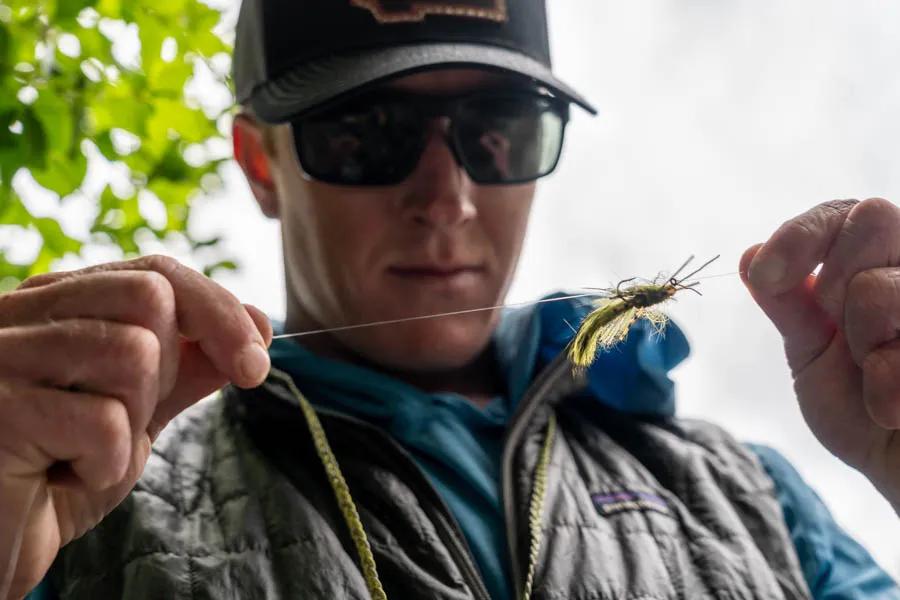
Always fish with two flies
Fishing nymphs below the surface often means getting the flies down as fast as possible. By fishing beadheads and by adding weight to your leader, you increase the rate at which your flies will sink. Adding two flies not only increases your sink rate but it also adds one more offering to the menu. For example, if both caddis and mayflies are hatching and the trout are clearly feeding subsurface because you do not see any fish rising, fishing a mayfly nymph such as a Lightning Bug as well as a caddis pattern like a Sparkle Pupa is a great way to cover your bets. On rivers with a variety of insect species like the Madison River, choose a mayfly pattern such as a Pheasant Tail and stonefly pattern like a Pat’s Rubberlegs. If you are certain the fish are feeding on mayflies instead of caddis, or vice-versa, fish two caddis patterns but vary the sizes or colors. You can fish two flies by tying the second fly to the bend or eye of the first fly. It is best to tie the second fly onto about 10 to 12 inches of tippet from the first fly to the second fly. Some Montana fly fishing guides even fish a large streamer as one of the two flies.
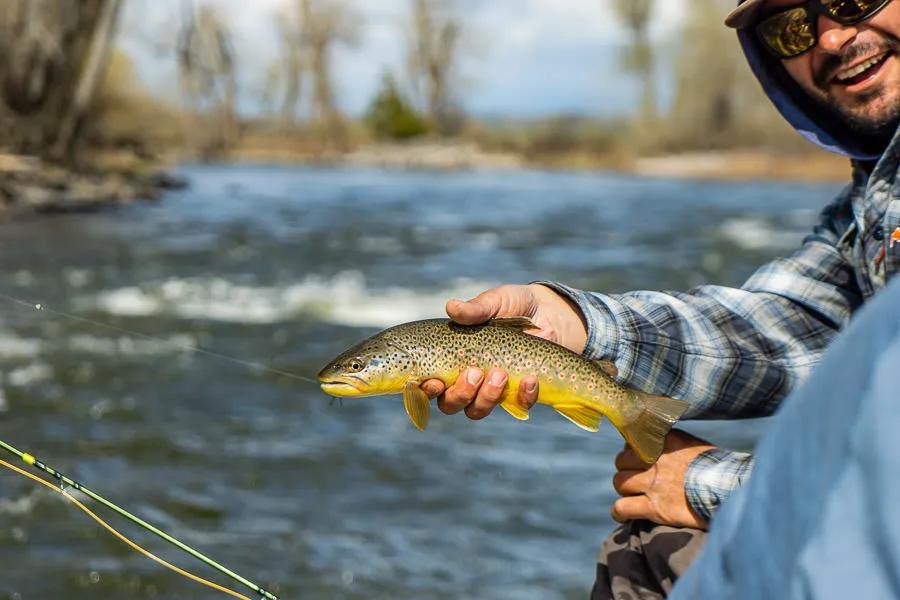
Leader material and adding weight to your leader are important
A successful nymph rig consists of more than just the right flies getting down at the right depth at the right time. Because the flies are tied to tippet which is tied-to or part-of a leader, understanding how leader length, leader material, and the addition of weight to the leader are all crucial to success. First, choose fluorocarbon leader and tippet material whenever you can. Fluorocarbon is made from a very dense material. Unlike monofilament, fluorocarbon inherently sinks and it is stronger and more abrasion resistant than monofilament. Because it is tougher and sinks faster it is the best choice for fishing subsurface nymphs. Even when fishing beadhead nymphs, getting the flies at the right depth is crucial. Whether you are fishing the calm and clear waters of the Paradise Valley Spring Creeks or the fast and boulder-strewn runs, riffles, and pockets of the Upper Madison, adding weight to your leader is standard protocol to catch more fish when fishing with nymphs. The amount of weight you add is determined by the depth and speed of the water you are fishing. For example, on DePuy's Spring Creek when fish are in shallow water but clearly feeding on nymphs near the bottom, you will add one or two very small--like size No. 10 or No. 12--split shots. But if you are fishing a deep run on the Missouri River in spring and need to get the flies down fast choose a larger, heavier size like a No. 1 or BB. Because 80 percent of the time most nymphs are near the bottom of the river, adding weight to your leader is important. This allows your flies to sink faster and spend more time at the depth the fish are feeding rather than sinking slowly and possibly never getting to the fish before drifting out of feeding range.
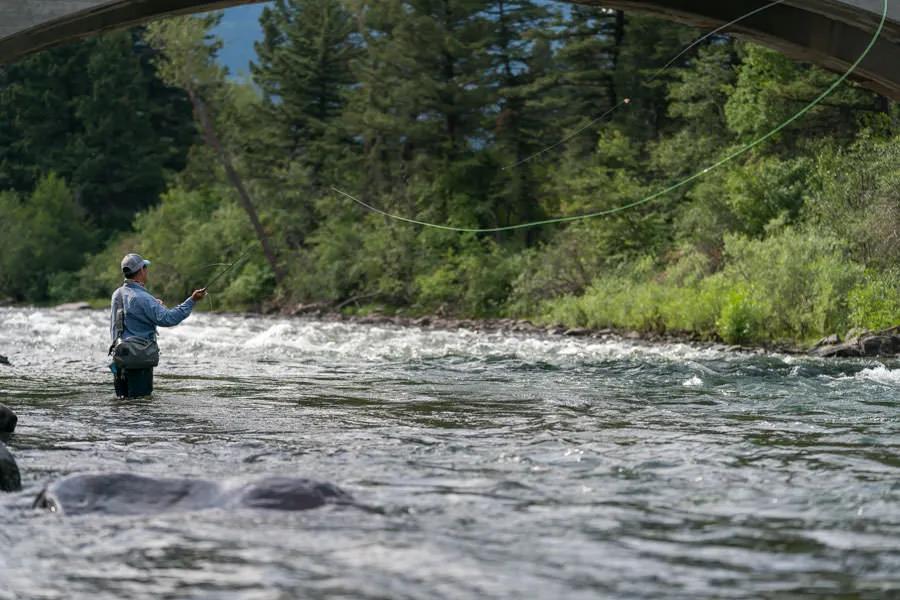
Learn to cast a wider casting loop
A nymph rig consists of the fly line, leader, indicator split shot, and two weighted flies. That is a lot of stuff to be casting. Reduce your risk of tangling it all by mastering the ability to cast a wide loop. Sure, tight loops are sexy and they cut the wind better than a wide loop, but when fishing a nymph rig it is important to slow things down and cast a wide loop. Add up the parts of a standard subsurface nymph rig—a leader, an indicator, weight and two flies and it is going to cast different than a single-fly dry fly rig. You can open up your casting loop and slow-down the casting stroke by pausing longer before transitioning from back cast to forward cast. A longer pause creates a wider casting loop which reduces the risk of tangling up the rig. You still need to stop your casting stroke in the normal fashion and at the normal time, but before you transition from backcast to forward cast, allow more time for all the extra stuff out there to straighten out.
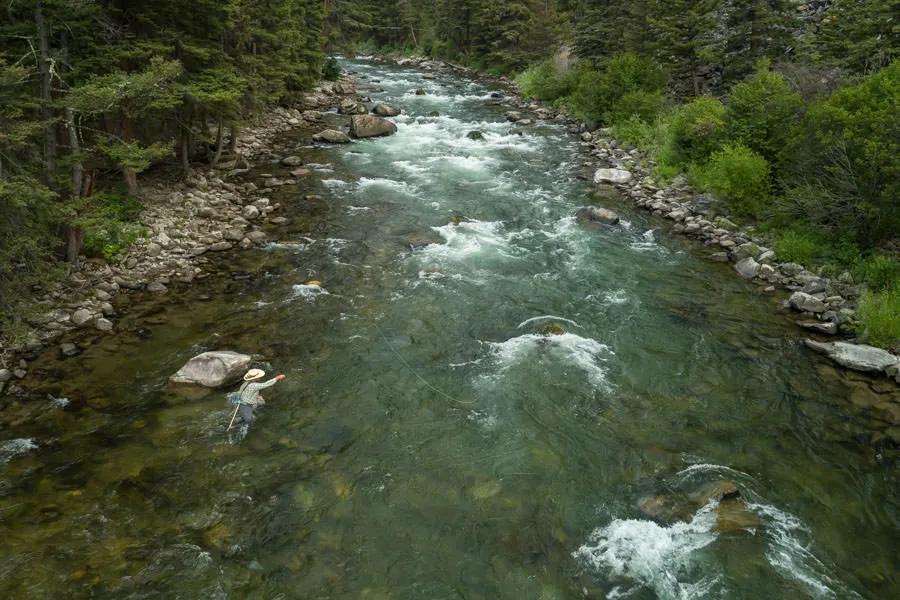
Lastly, use your imagination and learn to read water
Nymph fishing is more of a guessing game than fishing to rising trout. Even with accurate Montana fly fishing reports, finding fish when fishing nymphs takes some trial and error. When a trout rises, they show themselves and that makes it easy to plan your next cast. But when fly fishing with nymphs and targeting fish that are feeding below the surface or near the bottom of the river, you have to sleuth out the locations of the feeding trout before making your cast. Nymph fishing requires anglers to study the surface of the water for clues as to what the bottom of the river may look like and cast their fly accordingly. When targeting places to cast your fly, focus on current seams, and areas that look to have underwater structure or obvious changes in depth usually showcased by changes in color. Eddies and bubble lines also foretell fishy places below; additionally knowing the times of the day or seasons in which trout may be feeding in riffles, runs, or pools is helpful knowledge. A general rule is trout will feed in riffles during periods of a heavy hatch of caddis or Pale Morning Duns or in the summer months. Trout often feed in runs and pools during times when a strong hatch is less prevalent or in colder months or during the heat of summer when they are trying to find the deepest, coolest water available. Dave Hughes’ Reading the Water can unlock many mysteries of subsurface trout lies.
Unlike seeing a fish rise, seeing a fish eat a nymph is often an impossible task. Success in fly fishing can be measured in many ways. For some it is simply being on the water, away from the office or hustle of daily life. For others it may be the challenge of enticing a fish to rise to a well presented dry fly. And, for others it may mean catching plenty of fish in as little amount of time as possible. But because trout spend most of the time feeding below the surface if you want to catch more fish, you have to learn the nymph game. Just like fishing dry flies to selective trout requires a unique set of skills, so does consistently catching fish on nymphs. By understanding, adapting, and learning some new fly fishing skills, you can increase your chances to get into fish quicker and more consistently by improving your ability to fish nymphs.
